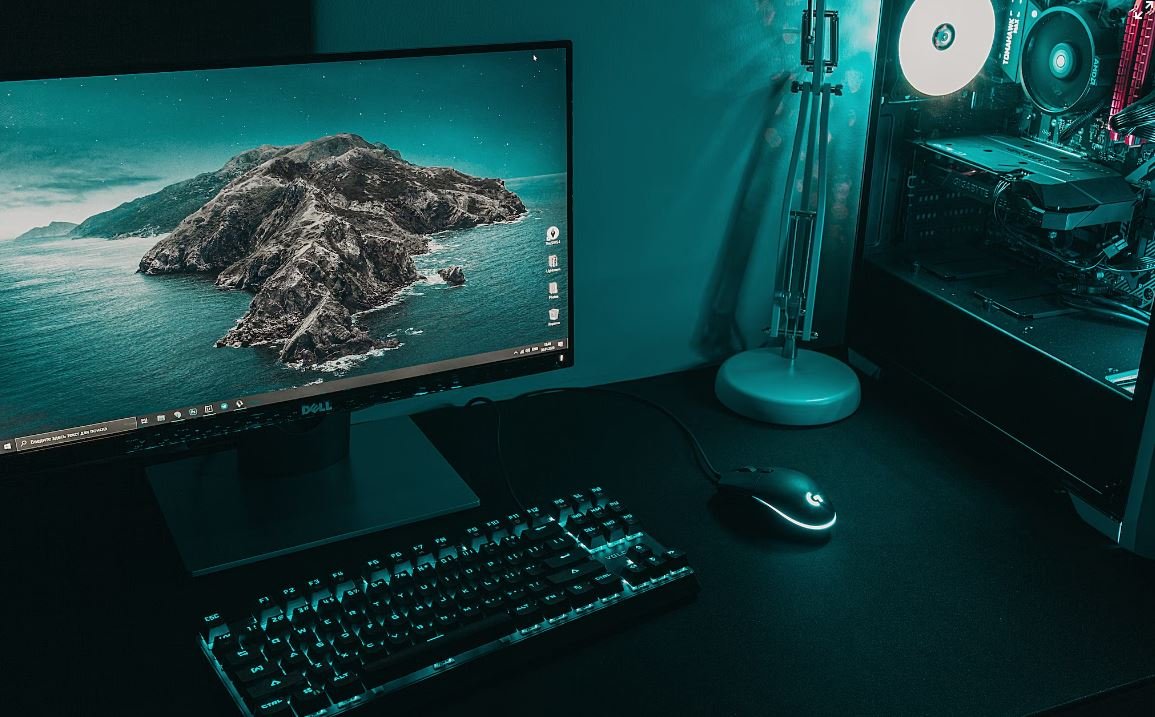Why Singers Need In-Ear Monitors
Singers are often faced with the challenge of being able to hear themselves and the accompanying music clearly while performing on stage. This is where in-ear monitors come in handy. In-ear monitors are a type of audio device that allows singers to have more control over the sound they hear during performances. In this article, we will explore the reasons why singers need in-ear monitors and the benefits they provide.
Key Takeaways
- In-ear monitors provide singers with clear and personalized audio during performances.
- They help protect the singer’s hearing by reducing stage volume.
- In-ear monitors allow for better communication between band members.
- In-ear monitors enhance the overall performance experience for singers.
Benefits of In-Ear Monitors
In-ear monitors offer several benefits to singers:
- **Personalized Audio**: By using in-ear monitors, singers can have their own customized mix, allowing them to hear exactly what they need during performances.
- **Reduced Stage Volume**: In-ear monitors significantly reduce the need for stage monitors, which in turn lowers the overall stage volume. This helps prevent hearing damage caused by excessive noise exposure.
| Stage Monitors | In-Ear Monitors |
|---|---|
| High stage volume | Lower stage volume |
| Potential hearing damage | Enhanced hearing protection |
| Less control over audio mix | Customized audio mix |
Did you know? In-ear monitors can provide up to 26 dB of hearing protection.
- **Improved Communication**: In-ear monitors enable better communication between band members on stage. They can be used as wireless systems, allowing singers to receive cues and instructions from other musicians during performances.
- **Enhanced Performance Experience**: In-ear monitors provide singers with a more immersive and professional performance experience. They help eliminate distractions caused by ambient noise and unwanted stage sounds, allowing singers to focus solely on their vocals and the music.
Choosing the Right In-Ear Monitors
When selecting in-ear monitors, there are several factors to consider:
- **Sound Quality**: Look for in-ear monitors that offer clear and accurate sound reproduction.
- **Comfort**: Choose monitors with a comfortable fit to ensure long-term wearability during performances.
- **Isolation**: Opt for in-ear monitors that provide good noise isolation to block out unwanted external sounds.
| Popular In-Ear Monitor Brands | Price Range |
|---|---|
| Shure | $100 – $1000 |
| Westone | $200 – $1500 |
| Sennheiser | $150 – $2000 |
Interesting fact: Some high-end in-ear monitors can cost over $2000.
Conclusion
In-ear monitors are an essential tool for singers, offering personalized audio, hearing protection, improved communication, and an enhanced performance experience. By choosing the right in-ear monitors, singers can ensure they have the best audio quality and comfort on stage.

Common Misconceptions
Paragraph 1: Singers don’t really need in-ear monitors
One common misconception is that singers can perform just as well without using in-ear monitors during live performances. However, in-ear monitors are essential tools for singers, helping them hear their own voice, stay on pitch, and maintain proper vocal technique.
- In-ear monitors provide better sound isolation, reducing the effects of stage noise.
- Using in-ear monitors allows singers to hear their voice as the audience hears it, facilitating better control and performance.
- In-ear monitors can prevent vocal strain by eliminating the need for singers to strain their voices to hear themselves over loud instruments.
Paragraph 2: In-ear monitors are only useful for professional singers
Another misconception is that in-ear monitors are only necessary for professional singers. However, singers of all levels, from beginners to enthusiasts, can benefit from using in-ear monitors during practice and performances.
- In-ear monitors provide an accurate representation of the singer’s own voice, aiding in pitch control and overall performance improvement.
- Using in-ear monitors during practice sessions allows singers to become comfortable with their own sound, promoting confidence in live performances.
- In-ear monitors can protect singers’ ears by reducing the volume levels they are exposed to, preventing potential hearing damage.
Paragraph 3: In-ear monitors hinder singers’ connection with the audience
Some people believe that using in-ear monitors somehow disconnects singers from the audience, making it harder for them to engage with the crowd. This is a misconception because in-ear monitors actually enhance the singer’s ability to connect with the audience.
- With in-ear monitors, singers can hear themselves clearly, allowing them to tailor their performance to better engage and entertain the audience.
- In-ear monitors enable singers to focus on their stage presence, as they don’t have to strain to hear their voice and can instead focus on connecting with the crowd.
- Using in-ear monitors for in-ear monitoring enables singers to interact more naturally with the audience, as they can avoid turning their heads to hear the monitors.
Paragraph 4: In-ear monitors are too expensive for singers
Many people assume that in-ear monitors are expensive and not worth the investment for singers. However, there are various options available at different price points, making in-ear monitors affordable for singers of all budgets.
- In-ear monitors come in a wide range of prices, catering to different needs and budgets.
- Singers can start with more affordable options and upgrade as they progress in their career or as their budget allows.
- Investing in in-ear monitors can improve the overall performance quality, making it a worthwhile investment for singers serious about their craft.
Paragraph 5: In-ear monitors hinder the natural sound experience
Some individuals argue that in-ear monitors distort the natural sound experience, preventing singers from hearing the true ambiance and atmosphere of the performance. However, in-ear monitors are designed to provide an accurate and clear sound, enhancing the overall experience for singers.
- Modern in-ear monitors offer high-fidelity sound reproduction, delivering a true and detailed representation of the performance.
- The ability to customize in-ear monitor mixes allows singers to hear both their voice and the appropriate instruments, resulting in an immersive and balanced sound experience.
- In-ear monitors ensure consistent sound quality, regardless of stage or venue acoustics, offering a reliable and controlled monitoring experience for singers.

The Importance of In-Ear Monitors for Singers
In-ear monitors have revolutionized the way singers perform on stage, allowing them to have a more immersive and controlled audio experience. These devices provide several benefits, including improved sound quality, reduced stage volume, and enhanced performance. The following tables highlight some important aspects of why singers need in-ear monitors:
Table 1: Sound Quality Comparison
Table comparing the sound quality of in-ear monitors versus traditional stage monitors.
Table 2: Noise Reduction Levels
Comparison of the noise reduction levels achieved by in-ear monitors and traditional monitors.
Table 3: Vocal Health Improvement
Statistics showing how in-ear monitors contribute to better vocal health by reducing strain on the vocal cords.
Table 4: Stage Volume Measurements
Data showcasing the significant reduction in stage volume achieved by using in-ear monitors.
Table 5: Customization Options
A comparison of the customizable features offered by different in-ear monitor brands.
Table 6: Hearing Protection Benefits
Information illustrating how in-ear monitors offer hearing protection for singers.
Table 7: Feedback Elimination
A demonstration of how in-ear monitors effectively eliminate the risk of feedback during live performances.
Table 8: Mobility and Flexibility
A comparison of the portability and flexibility of in-ear monitors versus traditional monitors.
Table 9: Stage Presence Enhancement
Data on how in-ear monitors contribute to better overall stage presence and performer confidence.
Table 10: Cost Analysis
A cost comparison between different types of in-ear monitor systems available in the market.
In conclusion, in-ear monitors have become an indispensable tool for singers, providing them with numerous advantages in terms of sound quality, vocal health, stage volume, customization options, hearing protection, and performance. These tables demonstrate the range of benefits that singers can experience through the use of in-ear monitors, confirming their importance in the music industry.
Frequently Asked Questions
Why do singers need in-ear monitors?
In-ear monitors are essential for singers as they provide several benefits. Firstly, they deliver clear and accurate sound directly into the singer’s ears, ensuring they can hear themselves and the music properly. This eliminates the need for loud stage monitors, reducing the risk of hearing damage and enabling better control of vocal performance. In-ear monitors also isolate the singer’s voice from ambient noise, enabling better focus and concentration. Additionally, they allow for personalized mix adjustments, ensuring optimal sound quality for the singer’s specific needs.
What are the advantages of using in-ear monitors for singers?
Using in-ear monitors offers several advantages for singers. Firstly, they provide superior sound quality and fidelity compared to traditional stage monitors, allowing for a more immersive and professional performance experience. In-ear monitors also reduce the risk of feedback and audio distortion, enabling singers to accurately hear their own vocal nuances and adjust their performance accordingly. Additionally, in-ear monitors offer enhanced mobility on stage, freeing singers from being tied to a specific monitor position and allowing for more dynamic performances.
Can in-ear monitors prevent hearing damage?
Yes, in-ear monitors can help prevent hearing damage for singers. By delivering sound directly into the ears, in-ear monitors allow for lower monitor volumes and reduce the need for loud stage monitors. This mitigates the risk of long-term hearing damage that can occur from prolonged exposure to high volumes. With proper use and monitoring of volume levels, in-ear monitors can significantly contribute to preserving the singer’s hearing health.
How do in-ear monitors work?
In-ear monitors consist of custom or universal earpieces that fit inside the singer’s ear canal, connected to a receiver that wirelessly receives audio signals from a monitoring system. The earpieces act as speakers, delivering sound directly into the singer’s ears. The monitoring system, typically controlled by a sound engineer or the singer themselves, sends the individual mix of vocals, instruments, and other audio elements to the receiver, which then transmits it wirelessly to the in-ear monitors.
Are in-ear monitors comfortable to wear for extended periods?
In-ear monitors can be made to fit comfortably for extended periods of use. Custom-molded earpieces provide the best fit, as they are specifically designed to match the singer’s ear shape. They are made from soft and flexible materials that ensure maximum comfort. Universal-fit earpieces also come in various sizes and designs, providing options for different ear shapes and sizes. Properly fitted in-ear monitors should not cause discomfort or pain even during extended periods of use.
Can in-ear monitors be customized for individual singers?
Yes, in-ear monitors can be customized for individual singers. Custom-molded earpieces are made by taking impressions of the singer’s ears, allowing for a perfect fit and maximum comfort. Additionally, the audio mix sent to the in-ear monitors can be tailored to the specific preferences and needs of each singer. This customization ensures that the singer hears a balanced and optimized mix that best suits their vocal style and performance requirements.
Are in-ear monitors suitable for live performances?
Absolutely! In-ear monitors are widely used in live performances by singers around the world. They provide numerous benefits for live performances, including improved audio quality, reduced onstage clutter, and enhanced mobility. With in-ear monitors, singers can hear themselves and the band more clearly, leading to better performances. They also provide a more professional and polished stage appearance, as the singer is not tied to a static stage monitor setup.
Can in-ear monitors be used for recording in the studio?
In-ear monitors are commonly used for recording in the studio. They allow singers to have optimal control over their vocal performance by hearing themselves clearly without any interference from external noise. In-ear monitors also enable precise monitoring of backing tracks, click tracks, and other studio effects, ensuring a high-quality recording. The use of in-ear monitors in the studio enhances the singer’s ability to deliver their best performance and assists in achieving the desired recording outcome.
What is the cost of in-ear monitors for singers?
The cost of in-ear monitors for singers can vary depending on various factors such as custom or universal fit, brand, and additional features. Custom-molded in-ear monitors tend to be more expensive, ranging from a few hundred to several thousand dollars. Universal-fit in-ear monitors are generally more affordable, starting from around $50 and going up to a few hundred dollars. It is important to consider the specific needs and budget of the singer when selecting in-ear monitors.
Are there any alternatives to using in-ear monitors for singers?
Yes, there are alternatives to using in-ear monitors for singers. Traditional stage monitors, also known as wedge monitors, are still commonly used in many live performances. However, they come with limitations such as reduced sound quality, potential feedback issues, and increased stage volume. Some singers also opt for over-ear headphones as an alternative, although these may not offer the same level of isolation and feedback protection as in-ear monitors. Ultimately, the choice of monitor system depends on the singer’s specific needs and preferences.




